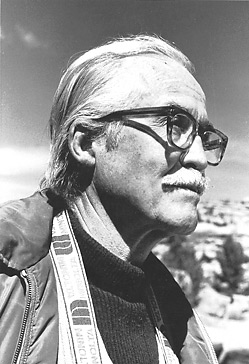

Photographing clouds has been my passion for 50 years.

|
Clouds reside in the Near Sky, the lowest 50,000 ft. of the atmosphere. That is in contrast to the distant stars in the Far Sky. Photographing merely involves seeing through the lens of a camera. Seeing has many different dimensions. There is generalized seeing with very little focus of attention to that being seen. In this case the Near Sky is like visual Musak, seen but not seen. The clouds have always been there and you pay little attention to them. At the other end of the attention continuum, there is seeing not only with the physical eye, but also with the inner eye, the eye of the artist innate in each individual but untouched and uncultivated in most. Here, each cloudscape is unique and worth savoring. Some cloudscapes, or clouds, feature such an array of color and arrangement of form that the result is beauty beyond description. Each photographer of the Near Sky faces the challenge of capturing fleeting images for future reference either of a technical or artistic nature. The following guidelines, if followed, will enable you to improve the quality of the images you capture. l. At the top of the list, keep your camera rock-solid when you press the shutter release. If possible, use a tripod, or rest the camera against some solid object. Practice holding the camera firmly and moving only the finger that activates the shutter release. Use of fast ASA film will minimize this problem. 2. Use a haze or sky filter continuously. 3. Use a polarizing filter continuously. Using this filter increases the contrast between clouds, particularly in the cumulus family, and the background sky, thus enhancing the cloud image. Polarized light maximizes at 90 degrees to the solar beam, as you will find by pointing the camera to various parts of the sky. Most point and shoot cameras will not accommodate screw -on filters. However, all is not lost. It is not difficult to hold a filter in front of the lens, rotating it to produce the desired effect and taking care not to allow the stray finger to impinge on the incoming light. 4. Use a neutral density filter as demanded by situations in which a bright sky and dark foreground are juxtaposed. 5. Become aware of the subtleties of light. In general, avoid photographing in the harsh light of the middle of the day. There is more drama in the light of the low-sun of morning and late afternoon. 6. Learn the art of composition. The artistic value of a cloudscape often is determined by the arrangement of the various elements that comprise the final image. Intrusive foreground material like bushes, trees , light wires and poles should be eliminated as a first step in composition. Tree branches sometimes come in handy as frames for a photograph. 7. Most cameras used by amateurs and semipros include an automatic focus capability that is activated by an infrared beam. If you have the ability to set the f-stop, you can decide on the depth of focus you want in order to enhance or obscure particular elements in the scene you are shooting. Fortunately this is only a minor consideration when shooting cloud images. 8. When photographing a halo or corona around the sun, find some object with which to block out the solar disc. Never look through the viewfinder directly at the sun. Overlooking this precaution could result in eye damage. 9. Always remember that clouds are ephemeral, always changing, disappearing into invisible vapor, and reappearing in visible form. This is Nature's "now you see it; now you don't" magic act. So click and catch the moment. Remember that film is cheap compared to the lasting value of a particular scene. 10. There are several brands of excellent quality film now on the market, led by Kodak, Fuji and Agfa. A wide range of film speeds is likewise available. ASA 200 is a good choice for most photographers of the sky. 11. Hone your skills by practicing, and stopping to think before you click. Is your inner eye awake? 12. Study cloudscapes taken by master photographers like Ansel Adams. Try to think as an Adams. Who knows, you may have the potential to become another master photographer of the Near Sky. 13. It doesn't happen frequently, but when it does happen it can cause acute embarrassment. Cameras use batteries. Batteries do die. Fortunate is the photographer who has a spare when the need arises. Good luck! John A. Day, Ph.D. (a.k.a. Cloudman) |
![]()
Clouds and Cloudscapes | Digital Photography
![]()
![]()
All Rights © Copyright John A. Day, 1998 - 2007
Site Design by DoubleRich Design
Last updated on: